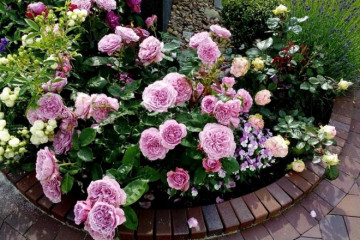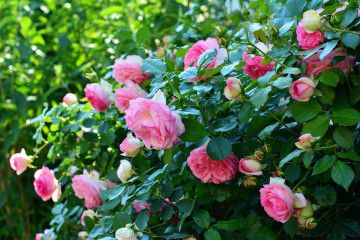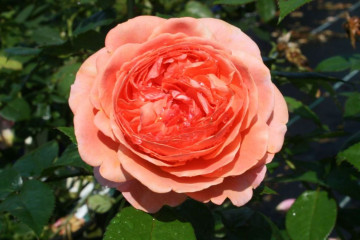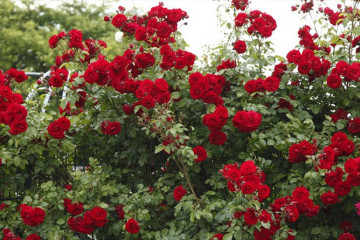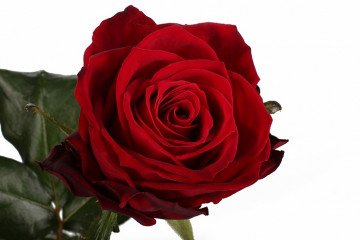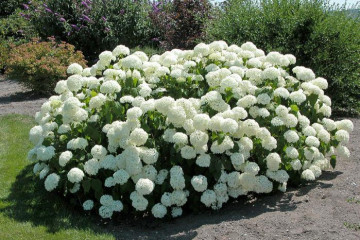Rose wrinkled - what is this variety
Content:
The wrinkled rose is not deprived of the attention of gardeners and is in great demand in the world market when creating unique landscape designs. It attracts the eye with its unusual flowers, attracts with unpretentious care, resistance to diseases, as well as rapid growth and formation of buds.
Rose wrinkled: description and features of the plant
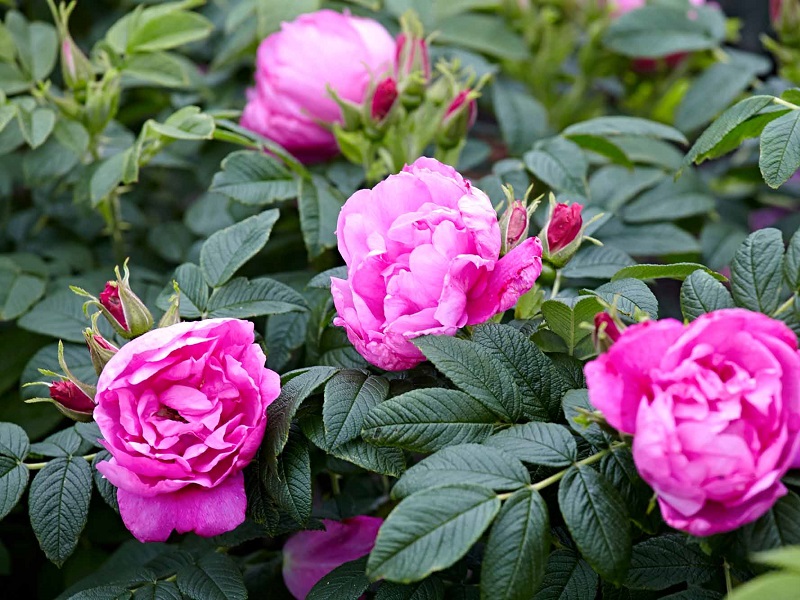
Wrinkled rose
Wrinkle-leaved rose belongs to the Rosehip family and is an original shrub that perfectly complements any flower garden. The culture has a long flowering period and goes well with other plants in compositions. The most popular varieties are white, pink and red.
In the wild, the plant can be found in Japan, China, Korea. The climatic conditions of these areas coincide with the requirements of the plant. In its natural form, culture is not found anywhere else, but it is artificially multiplied and cultivated in almost all countries.
Rugosa or wrinkled rose reaches a height of 2.5 meters, has strong spreading stems, erect shoots and sharp thorns of various sizes, which are noticeable due to the contrasting red hue. The rosehip root system is powerful, develops well and deepens by 2.5 m, branching into many small shoots.
The foliage is characterized by a wrinkled surface and a bright green color. The lower part of the plate is grayish. The length of the leaf reaches 22 cm on average. The buds begin to form separately or are grouped in clusters. The color palette ranges from pale white to deep red, depending on the variety. The bud diameter is 6 to 12 cm.
Flowering begins in May-June, after which the fruiting period begins. The fleshy yellow fruit acquires a warmer color over time and reaches an average of 3 cm in length.
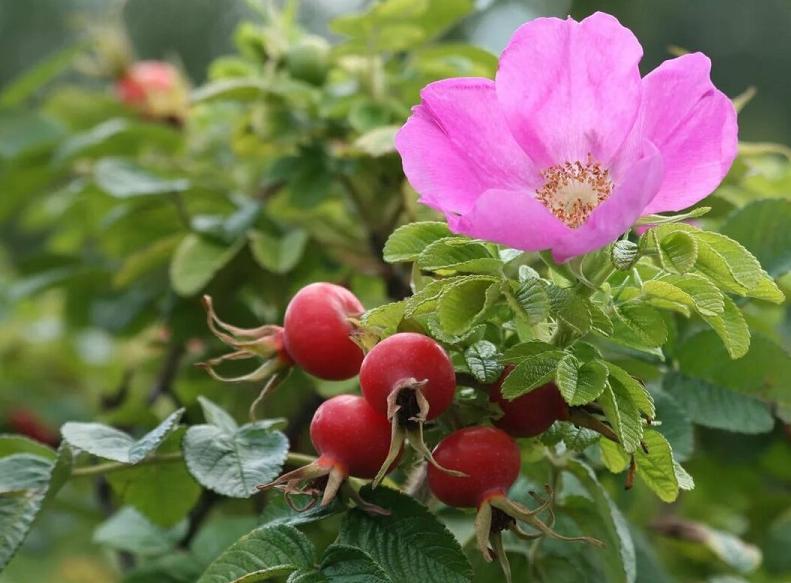
Fruits and buds of a wrinkled rose
Common varieties of wrinkled rose
Thanks to the persistent efforts of breeders, many varieties of wrinkled roses have been bred.
Grothendorst
Rosa Rugosa Grootendorst is a hybrid obtained in 1918. Its feature is abundant flowering. On the shoots there are up to 10 small pink buds (up to 4 cm in diameter), collected in a brush. The shape of the flower outwardly resembles a carnation, which is why it got this name. The plant looks great in group plantings, hedges, mixborders.
Alba
Alba wrinkled rose withstands the harsh climatic conditions of Siberia and is recommended for growing in areas with cold and long winters. In the summer, it is abundantly covered with buds, does not have a sugary aroma. The word "alba" from the Latin language means "white", which makes it clear about the monotony and freshness of the color spectrum of culture.The wrinkled rose Alba reaches an average of 150 cm in height and is used to create hedges of backyard flower beds, graceful compositions.

Rose wrinkled Alba
Hansa
Rosa Rugosa Hansa is abundantly covered with double buds of a pale pink shade with a lilac tone and is included in the rating of the most winter-hardy varieties. Grows up to 2 m in favorable conditions. The diameter of the double flower varies from 6 to 8 cm. Suitable for unusual and extravagant landscape designs.
Queen of the North
Rose the Queen of the North is a plant with frost resistance and excellent immunity to fungal and infectious diseases. Terry buds of a rich pink shade with a white core up to 1 cm in diameter delight with their attractiveness throughout the summer. The shrub develops rapidly and grows up to 2 m, in cold regions - up to 1 m.
Rubra
Rosa rugoza Rubra is a spreading shrub reaching 2.5 m in height. Pleases with large buds with bright red petals during the summer. In the last weeks of August, orange fruits are tied. The Rubrum variety is unpretentious and does not require much attention; landscape designers actively use it to form a hedge or mixborder.
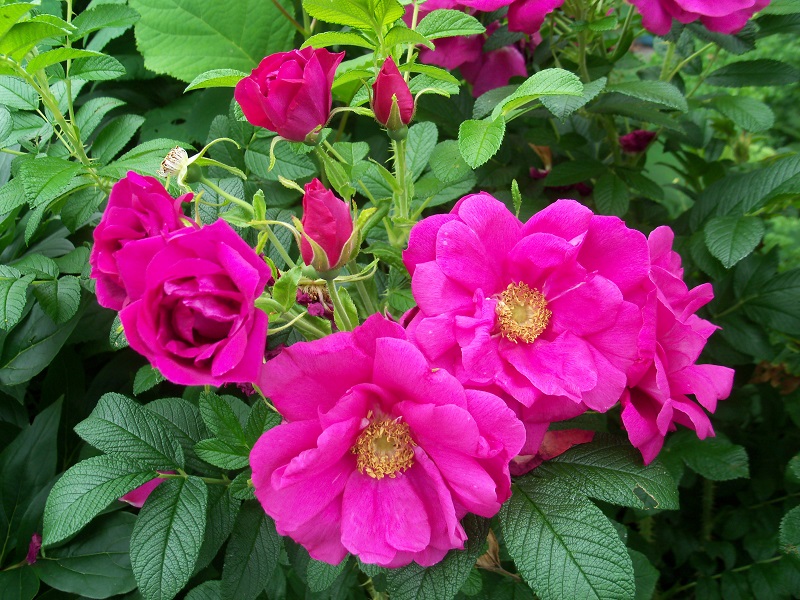
Rose wrinkled Rumba
Growing features, how to choose a seedling
In order to properly organize the planting, you should first choose the optimal place that meets all the requirements and acquire a high-quality seedling of the desired variety.
Determining the place and timing for landing
It is necessary to plant a wrinkled rose in the spring, picking up a sunny plain, protected from the wind from the north by a fence or building. The soil is loamy, well saturated with humus.
Sapling selection
The plant can be propagated independently by cuttings or purchased at the store. When choosing a seedling, you should give preference to:
- annual roses;
- plants with an open root system, smooth shoots without damage;
- specimens with unblown buds.
Planting technology and subsequent flower care
Competent planting and quality care is a guarantee of abundant and long-lasting flowering of a cultivated plant.
Landing algorithm
Instructions for planting a wrinkled rose:
- Dip the root system of the planting material into a clay mash.
- Dig holes about 10-15 cm deep, add some organic matter.
- Place the seedling in the hole.
- Spread the roots neatly and cover with nutritious soil.
- Water abundantly.

Planting a wrinkled rose
Plant care
Nuances and description of agrotechnical measures:
- Watering. Moisten the soil abundantly as it dries. The procedure is performed depending on weather conditions. In dry summer, moisturize at least 2-3 times a week.
- Top dressing. Mineral and organic fertilizers should be applied regularly in the complex 4 times per season. For the first two years, the flower can do without feeding.
- Pruning. In the fall, it is systematically necessary to get rid of weakened, dry branches.
- Preparing for winter. This agrotechnical technique is carried out depending on the growing region. In areas with harsh winters, quality shelter is essential.
Diseases, pests and methods of dealing with them
The danger to the growth and development of the plant is posed by spider mites, leaf rollers, rot and powdery mildew. You can prevent the rose from getting captured by pathogens and insects with the help of regular spring prophylaxis in the form of spraying with special agents. If symptoms are found, it is necessary to treat with chemical compounds.
How a wrinkled rose can be used in landscape design
The wrinkled rose is commonly used to complement landscape compositions. Some varieties look great in hedges due to their considerable height. Plants fit perfectly into group plantings along with peonies, irises, chrysanthemums.
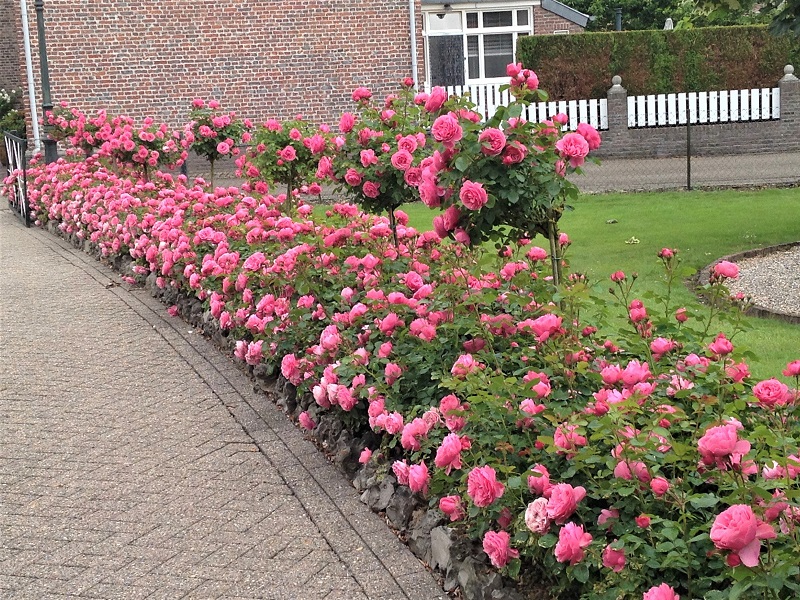
Wrinkled rose in landscape design
Wrinkled roses boast many advantages over their other relatives, for which they have received recognition from gardeners and designers. But in order to be content with the flowering of a culture, you should know the peculiarities of cultivation and encourage its whims.
